Our buyers Guide for First Shoes
Buying your child’s first shoes can be an emotional experience, either fraught or magical. From the moment they are born your only concern is to ensure their health and happiness. The desire to do the best for your child should also apply to ensuring your children’s feet are protected as they grow and develop. We have written this guide so you have a wonderful experience buying your baby’s first shoes. Or take a moment to read through our other blog on How to Measure Kids Feet at Home.
 Ask The shoe Experts
Ask The shoe Experts
We are Begg Shoes, an independent, family-run shoe business which has been fitting shoes since 1866. We have great deal of experience in shoe fitting and we aim to maintain the very highest standards of expertise in our teams – who undertake extensive training in-house and with professional training bodies. All of our store managers are fully qualified members of the Society of Shoe Fitters and practically, they have fit checked many 100s of little feet every year. All of this helps us give you expert advice.
Please get in touch with us if you have any questions we will be more than happy to help.
Frequently Asked Questions
When to buy first shoes?
The answer is when they are walking independently for most of the day and want to walk outside. When your child is still crawling and cruising it is best for your child to go barefoot as long as possible, particularly at home.
Why should I have my child’s foot measured?
Taking your little one to be properly measured and fitted is important. The measuring process tells us which size and width to start with – as much as anything it saves time trying to guess which sizes to try on. Remember that foot measurement is only a starting point however – ultimately when different shoe shapes fit everyone differently it is the fit check that really matters most. As was mentioned above your child’s foot is still developing until they are a teenager and so from the start it’s important to have properly fitting and supportive shoes to ensure the correct foot development.
While many parents like to measure feet at home and save the hassle of visiting a store, there really is no substitute for the knowledge, training and expertise of a qualified shoe fitter. To get the best fit – we recommend you go to an expert shoe fitter locally for their measure and fit service.
What should I look for in a first shoe?
When you get to the stage of buying shoes then look at the support, fastenings, material and protection features of the shoe. Tiny baby feet are sensitive and need smooth, soft linings and flexible soles for their squashy feet. Fastenings such as Velcro or laces allow you to achieve a fully adjustable best fit for your child, but getting the shoe on can be the biggest challenge for first-time shoe wearers. Quick and secure fastenings are the key to ensuring a good fit and rip tape fastenings are usually the best option for everyday practicality.
Why is the fitter asking me to hold my child while they measure their feet?
The fitter will ask you to hold the baby on your lap with their knees over your knees to ensure that your child’s leg and foot is in the correct position in order to get an accurate reading on the measuring gauge. This will also help to keep your child calm and reassured during this new experience. Meeting a shoe fitter with a fitting gauge for the first time can be a scary experience so parents should be ready to help out a little.
 Why is the fitter saying to buy a shoe that is a different size to the measurement?
Why is the fitter saying to buy a shoe that is a different size to the measurement?
Fitters use a measuring gauge to measure the size and width of your child’s foot. The measuring gauge is a guide for the fitter as it is based on one manufacturers last sizes. The problem is that different styles or brands your child fit differently to what was measured, or printed on the front of the box. The shoe fitter will always ensure that the shoe is the best fit for your child, sometimes it will seem a bit strange when sizes change from what you had expected, but this is completely normal in shoe fitting.
When should I get my child’s feet measured?
This depends entirely on you and your child. Saturdays are always busy so if you can go during the week then it will be a less stressful experience. Your child needs to be awake and not tired so the fitter can measure and fit shoes without causing distress. If your child falls asleep in the pushchair before they get to the store try to come back later rather than wake them up as a screaming tired child is no fun for you or the fitter.
What socks should my child wear?
Make sure your child is wearing the type of socks they will be wearing with the shoes you intend to purchase or take a pair with you, this will ensure the best fit for your child. Check that the socks are free from casting-off knots that can cause rubbing and soreness. Check that your socks are not too big, with excess material folding up, or too small with little toes being curled up. Nice quality cotton blend socks do not need to be expensive, but it does really help if they are an appropriate size.
How often should I have my child’s feet measured?
Remember that children’s feet are always growing and so it is advisable to have your child’s shoes checked every 4-6 weeks for infants (0-3 years) and 6-8 weeks for 3-4 year olds and every 10-12 weeks for 4 years onwards to ensure they still fit properly.
Don’t worry if things don’t go to plan the first time you try to buy your baby their first shoes. It can be easy to get carried away by the adorable cuteness of baby shoes. Remember that babies often don’t like strangers or strange environments, especially when that stranger is trying to attach a measuring gauge to their foot, so they may react differently to normal. Our advice should ensure you have a happy experience buying your child’s first shoes.
when to buy first Shoes – stages of growth
Many adults neglect their foot health and therefore the feet of children are often given the same careless treatment. In fact from birth to early teenage years is when the feet are at their most vulnerable and therefore need the most care to prevent any problems later on. Properly fitting shoes can prevent and even help with existing foot problems. Babies’ feet are made up of cartilage and protected with a layer of fat to protect the developing bones. This layer of fat will remain for around 2 years or so and then you will start to see the natural shape of their foot develop.
Did you know?
- Babies feet are roughly triangular in shape with a narrow heel and wide front
- Children don’t feel pain in their feet in the same way as adults so don’t rely on them to tell you when they feel discomfort when wearing shoes
- Children’s feet grow erratically – they can grow up to half a size in a matter of weeks
- The foot keeps growing and developing with bones fusing together until you are 18 years old
- There are 26 bones in an adult foot
Stages of Learning to Walk
Crawling
Once your child can sit up independently they will soon take a keen interest in the world around and will want to start exploring it. There are several different styles of crawling and your child may discover any one of them or use a combination of them to get about. There’s the traditional arms and legs propulsion, bottom shuffle, sideways crab, or sliding on their tummy. The variety is endless and all are perfectly fine and not to mention adorable to watch.
 Cruising
Cruising
Once they have mastered crawling (and drive you to distraction trying to keep track of their speedy mobility) they will be on to their next challenge, standing up. To facilitate this little children will hold on to objects around them for support – a chair, sofa, table, you. Once they have that support they will start to take tentative steps as their legs gain the strength, balance and stability they need to start walking on their own.
 Walking
Walking
It can take a while to master the skill of walking on their own, and you may have a few ups and downs along the way. Children tend to start with a very stiff gait, legs and arms sticking out and wobbling about. Keep encouraging them and they will soon learn the balance and coordination required to walk and run on their own.



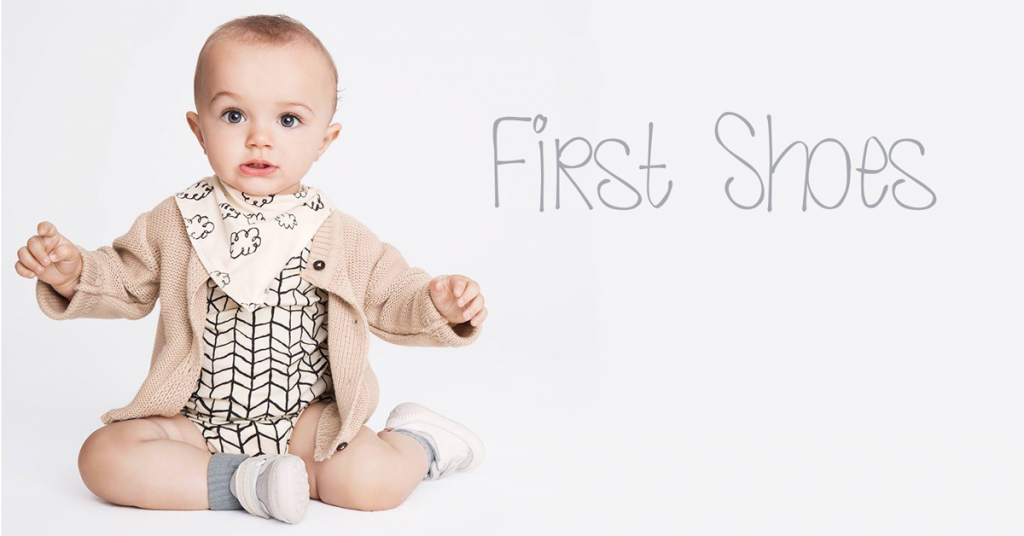 Ask The shoe Experts
Ask The shoe Experts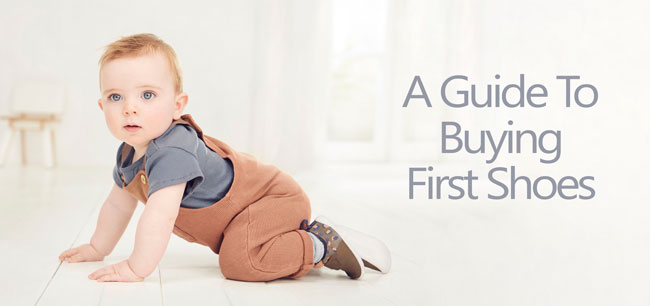 Why is the fitter saying to buy a shoe that is a different size to the measurement?
Why is the fitter saying to buy a shoe that is a different size to the measurement?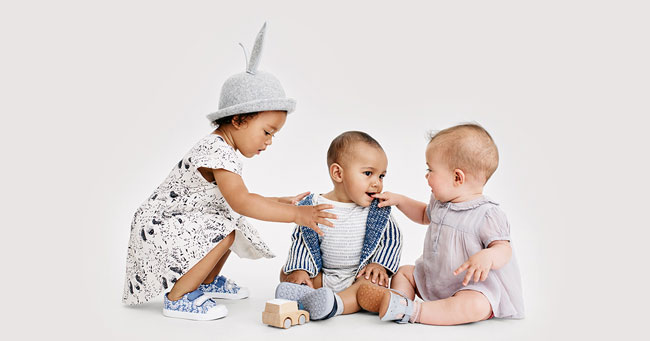
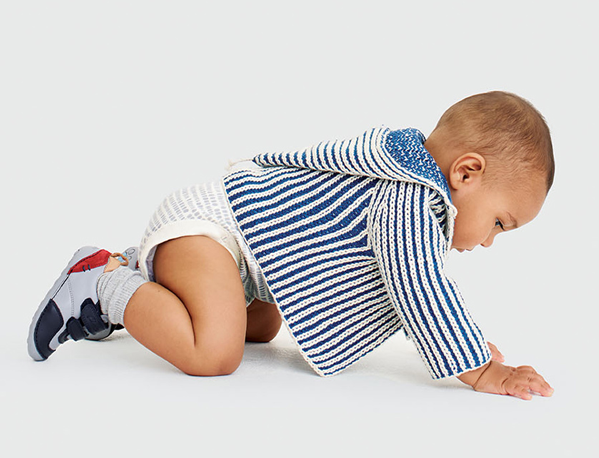 Cruising
Cruising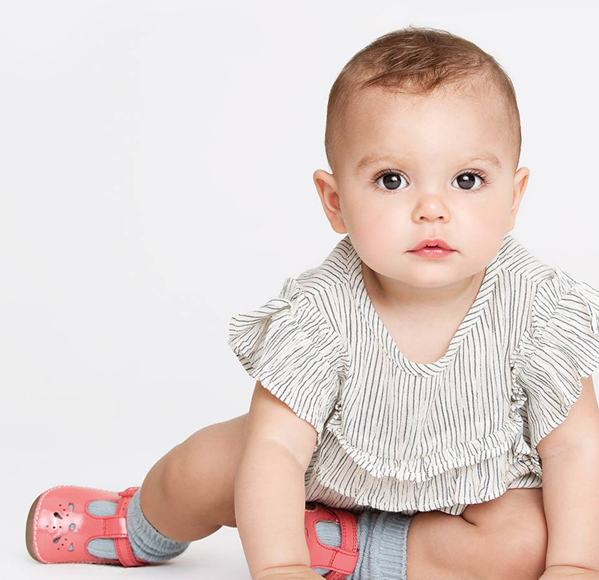 Walking
Walking